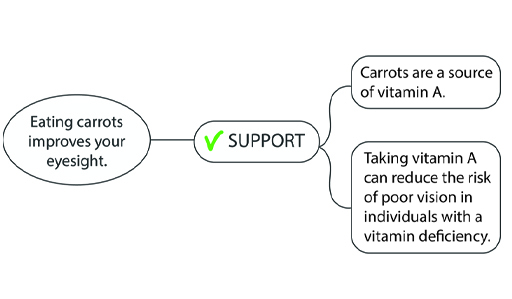1.2 A first argument map
As you investigate your main claim, you can keep track of the argument so far using an argument map. This is a diagram that displays the claims you have collected so far and the relationships between them. Figure 2 shows an argument map for the main claim and the supporting claims you have collected so far.
In Figure 2, the main claim is enclosed in a circle. The supporting claims, enclosed by a box, are connected to the main claim via a box labelled ‘SUPPORT’. There is also a green tick inside this box.
In this section you were introduced to main and supporting claims. The next section introduces a third kind of claim: opposing claims.

